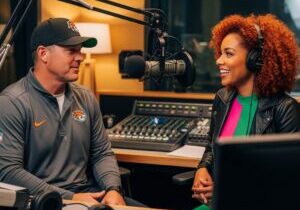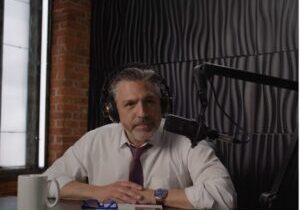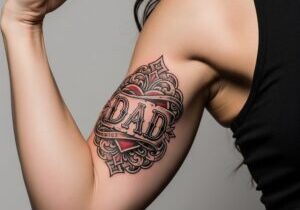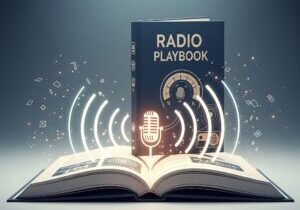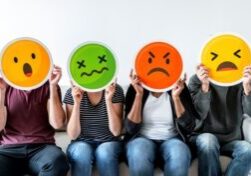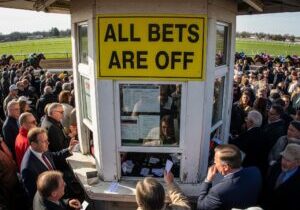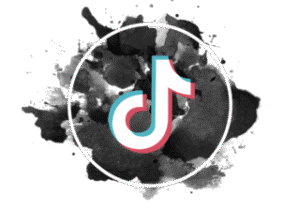
Do you have any idea what a “rock storyteller” looks like? Neither did I, so I fired up Canva’s AI engine and got the image that adorns the top of this post. To my eye, it resembles a Keith Richards-type guy trying to spin musical yarns to a bunch of kids. In fairness, I tried other AI image generators and didn’t really end up with much better.
And given the rich history of the music and the fact there’s a story behind every song, you’d think we’d all be able to come up with a bunch of examples of people who exemplify the “rock storyteller” label. In fact, I’ve known a lot of talented storytellers.
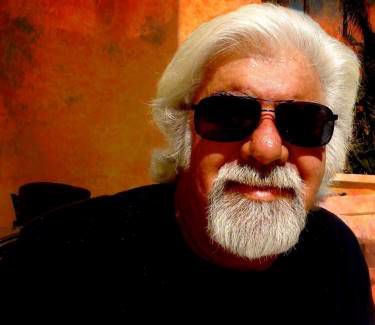
Nick Michaels
The late Nick Michaels (pictured) was exceptional, and you can still hear him creating psychedelic imagery with his words on his The Deep End syndicated show. There have been many on-air hosts, including the late Jim Ladd (who could take you back to the first time you heard a song), Bob Stroud, Pierre Robert, Redbeard, Debbi Calton, Ken Calvert, Meg Griffin, Andy Langer, Pat Martin and many others who graced the radio airwaves. A few are still dazzling us with their encyclopedic knowledge of the music and what it has meant culturally.
A problem that most of these aforementioned musical narrators shared is the lack of airtime “real estate” to work their magic. On most stations, the clock is ticking, and few have enough runway to consistently do justice to this craft. It’s why Janda Lane of WDRV has moved her franchise to a podcast aptly titled Behind the Song. And of course, there was Vh1’s “Behind the Music,” a popular example of glorifying a band by telling the tale behind their story arc. I’m sure you can think of other examples, but most of them aren’t on the radio.
Last year, one of our guys told me about a unique talent known as the Professor of Rock with a regular YouTube show. I checked it out and was impressed with what I experienced. Adam Reader was intelligent, engaging, and natural. He had a disarming way of telling viewers both familiar and unexpected stories of music performers and their craft. He knew his stuff and clearly brought passion for and fascination with the music to his video shows. And I also noted that as the Professor of Rock, Adam Reader wasn’t a slave to a genre or a format – not everyone he talked about fit our convenient radio definitions.
I started wondering if this guy could do this, why couldn’t some of the famous names listed earlier in this post pull off the same thing? After all, they know their stuff, they’ve interviewed everybody who is anybody in rock, and they have an entire station, and in some cases, a company behind them.
And then you look at Adam’s YouTube page. Not only is it exceptionally well put-together but Adam has amassed north of one million subscribers to his tête-à-têtes about rock n’ roll and the people who make it. Except he’s not just talking one-on-one to you (even though its feels that way), he’s telling his stories to more people than even the biggest radio shows cume.

Not only is his stuff top shelf, but he’s a content machine. On YouTube alone, Adam cranks a video every day of the week – except Sundays. And he’s already produced more than 1,100 videos on the channel. Given there’s a story behind every song, of course, he’s not going to run dry anytime soon.
He also has that signature look – the glasses, the hat, the rock n’ roll T-shirts. I’m watching the Professor of Rock do his thing, and it dawns on me that while he’s very, very good at what he does, he doesn’t sound like a classically trained radio guy.
He sounds too real.
Still, Adam Reader was heavily influenced by one of the biggest names in radio history – Casey Kasem – who laid the groundwork for Adam’s eventual realization that he could actually do this.
Yesterday, I got the same news you did. In fact, you may have glanced at the trade coverage about some Professor of Rock getting a syndicated deal, and shrugged because you’ve never heard of this guy. And yet, Skyview Networks – pretty sharp players – have inked Reader to do his act on broadcast radio. And three of Hubbard’s finest Classic Rock stations – WDRV in Chicago, KSLX in Phoenix, and KSHE in St. Louis – have already signed up to carry the show now dubbed “Classic Rock U.”
Hubbard programming chief, Greg Strassell, told me he didn’t have to twist any arms. Hubbard’s programming core just needed to meet and chat with the enigmatic Adam Reader to know this guy is the real deal. In fact, his personal story is as compelling as the stories he tells about Robert Plant, Don Henley, and Stevie Nicks.
When you get to know Adam, and learn how he got to where he started – in little Blackfoot, Idaho, known as the “Potato Capital of the World.” Like a lot of Gen Xers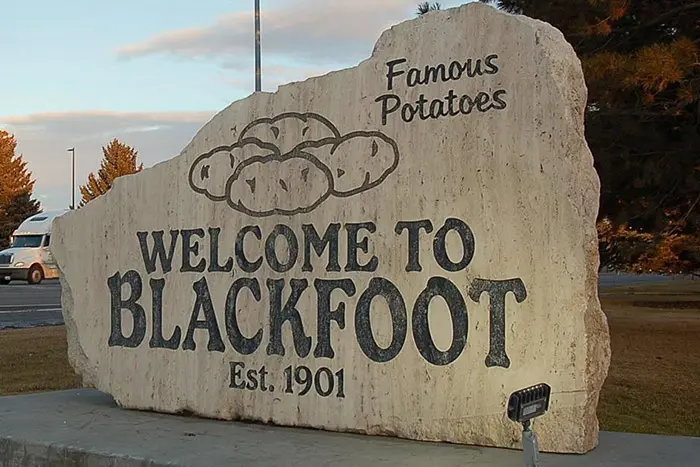 , Adam’s tastes were greatly influenced by his father – an unabashed fan of Classic Rock, especially the Fab Four.
, Adam’s tastes were greatly influenced by his father – an unabashed fan of Classic Rock, especially the Fab Four.
And now he’s emerging as the storyteller laureate of Rock. Not bad for a second generation Classic Rocker who didn’t grow up cueing up records, using a splicing block and a razor blade to edit tape, or racking up big reels of public service programming on Sunday mornings.
But he knows his stuff and is truly a prep monster, to a point where his first interview, Kenny Loggins, immediately knew he had the goods, and helped Reader set up subsequent interviews with the Doobie Brothers, the Beach Boys, and others. And now, with the Skyview deal, Reader has a shot to reverse the career path of thousands of radio performers. His first gig in radio is his own syndicated deal soon to be airing on three legendary radio stations.
For years, I’ve heard radio execs talk about how the next generation of talent would come from the Internet – TikTok, Twitch, YouTube, Insta. And yet somehow, those web stars and Internet rarely, if ever, end up on terrestrial radio. It’s one of the reasons why “Classic Rock U” is such an amazing Petri dish for radio. We’re going to learn how a YouTube sensation fares on FM radio.
I had a chance to catch up with Adam via Zoom, and it was a joyful conversation, I believe for both of us. We talked music, pop culture, our families, and the odd turn of events life often takes. Here are some of the highlights of our conversation.
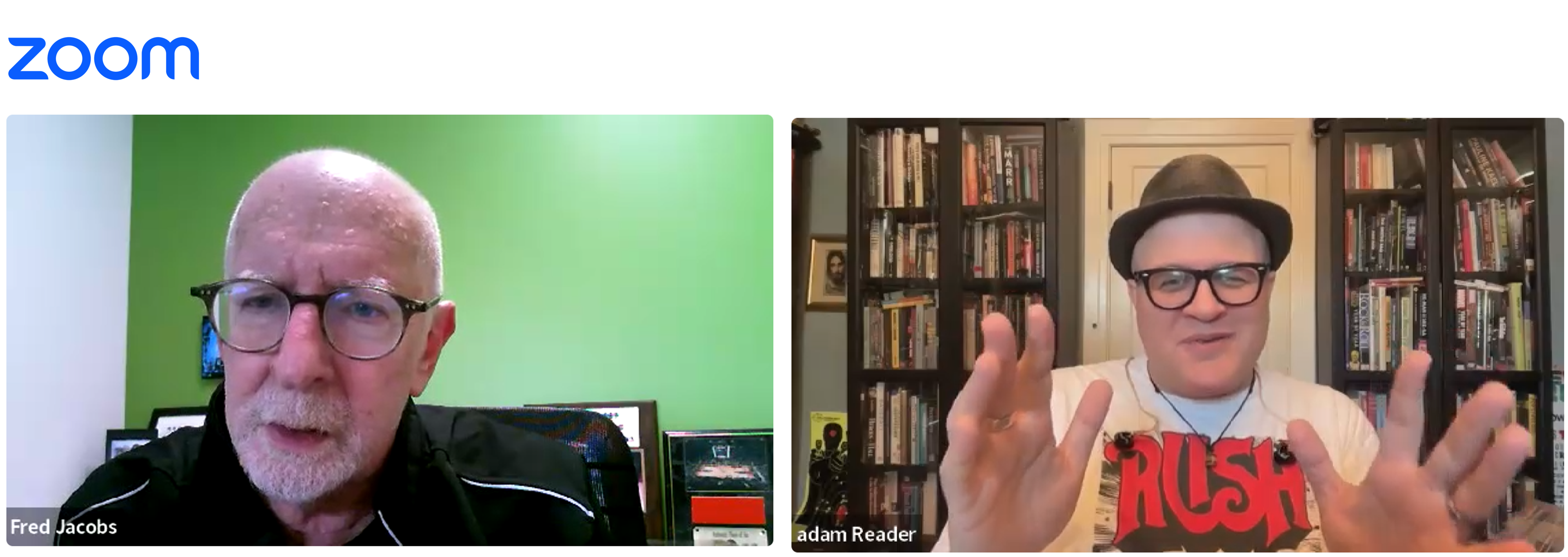
Fred: Adam, this Skyview/Hubbard deal couldn’t have been part of your 2024 plan, right? You didn’t know this was coming?
Adam: I didn’t know, no. It just kind of came out of nowhere from a guy I knew that I’ve worked with before, and it was back in late fall of ’23 that we first met.
Fred: Well, most people in radio don’t know who you are, and part of what you and I are going to be talking about is introducing you, at least through my blog. So, you know, as basic as it sounds, talk a little bit about where you grew up and maybe musical influences and, you know, how your passion for rock and roll started, because obviously, that’s what’s fueling all of this. You love this stuff. It’s really obvious from watching your work that this isn’t just a job, it’s a passion.
Adam: Well, I grew up in a small town in Idaho. I say Blackfoot, Idaho. It’s actually a little teeny town called Moreland. For me, it actually grew out of curiosity. My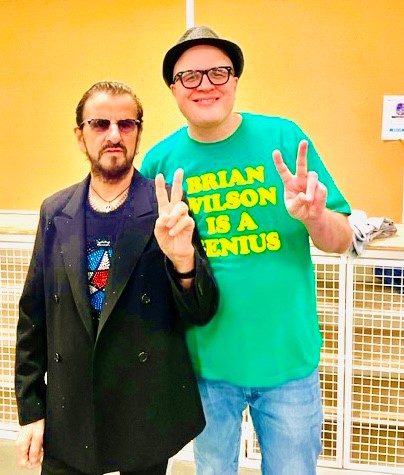 dad was a huge rock and roll fan. You know, he told me the story of when he was a little kid and watched the Beatles on Ed Sullivan. I think he was 10 or 11 years-old and he said that his whole world changed. And it was really neat, many decades later, to be able to last year talk to Ringo about that experience. He invited me out to see his All Starr Band. That was kind of a full circle for me.
dad was a huge rock and roll fan. You know, he told me the story of when he was a little kid and watched the Beatles on Ed Sullivan. I think he was 10 or 11 years-old and he said that his whole world changed. And it was really neat, many decades later, to be able to last year talk to Ringo about that experience. He invited me out to see his All Starr Band. That was kind of a full circle for me.
So, it was my dad, you know. I had such an education growing up. My dad would bring home a new record or two every week. And that was really cool to have a dad like that. I remember there was a bully on the playground when I was young who said, “You know, my dad could beat up your dad.” And I said, “Yeah, well, my dad listens to Led Zeppelin, and your dad listens to Conway Twitty.”
My dad loves Zeppelin, Black Sabbath, Credence, the Beatles and Motown. He’s a big fan of all types of music. And so that was really my only way to connect with my dad. We didn’t really have much in common outside of that. He was a painting contractor, and I was a kid that was kind of a music head. I was into movies and entertainment and pop culture and anything I could get my hands on.
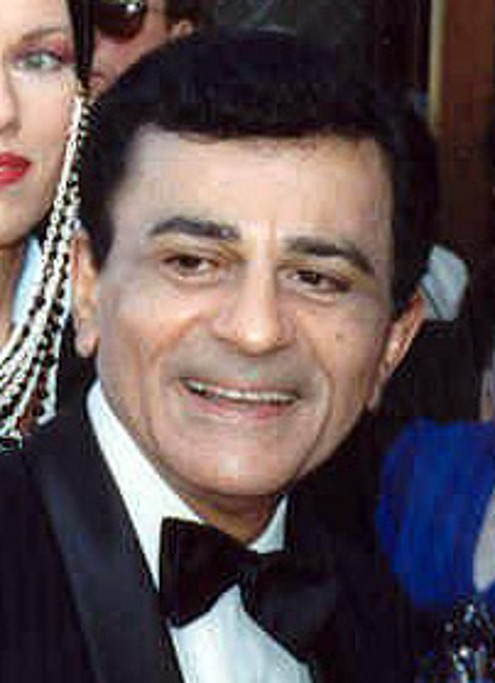
Casey Kasem
And so growing up in a small town and not really having much to do in the early eighties, Casey Kasem’s American Top 40 was another huge touchstone for me. I listened every single week. I did not miss a week. I would write down on my tracker the songs from 40 to number one. I would keep track of the songs later when I learned about Joel Whitburn’s books. And I have every single one of them. I love the charts. I love the stats. And I was really into baseball, too. Stats are the thing music and baseball kind of have that in common, right? And I don’t think there’s two things in America that are quite like baseball and music with the tradition and the history.
And it became this game that my dad would play with me. “Okay, for a million dollars, what year did that song come out?” and it got to the point where my dad owed me $20 million. And he said to me, “I think you might have a photographic memory.” And I really don’t. I just think that we love the things that we love when we remember those things. But it was just fun. It was a great connection. And so that made me curious about the stories behind the songs. And because this is back in the time where there was just no Internet, there was a lot of mystery behind the music as well.
Then, I discovered MTV, and that was a whole other rabbit hole. First my friend had it, and then we got it in 1986. It finally came into our area because we lived so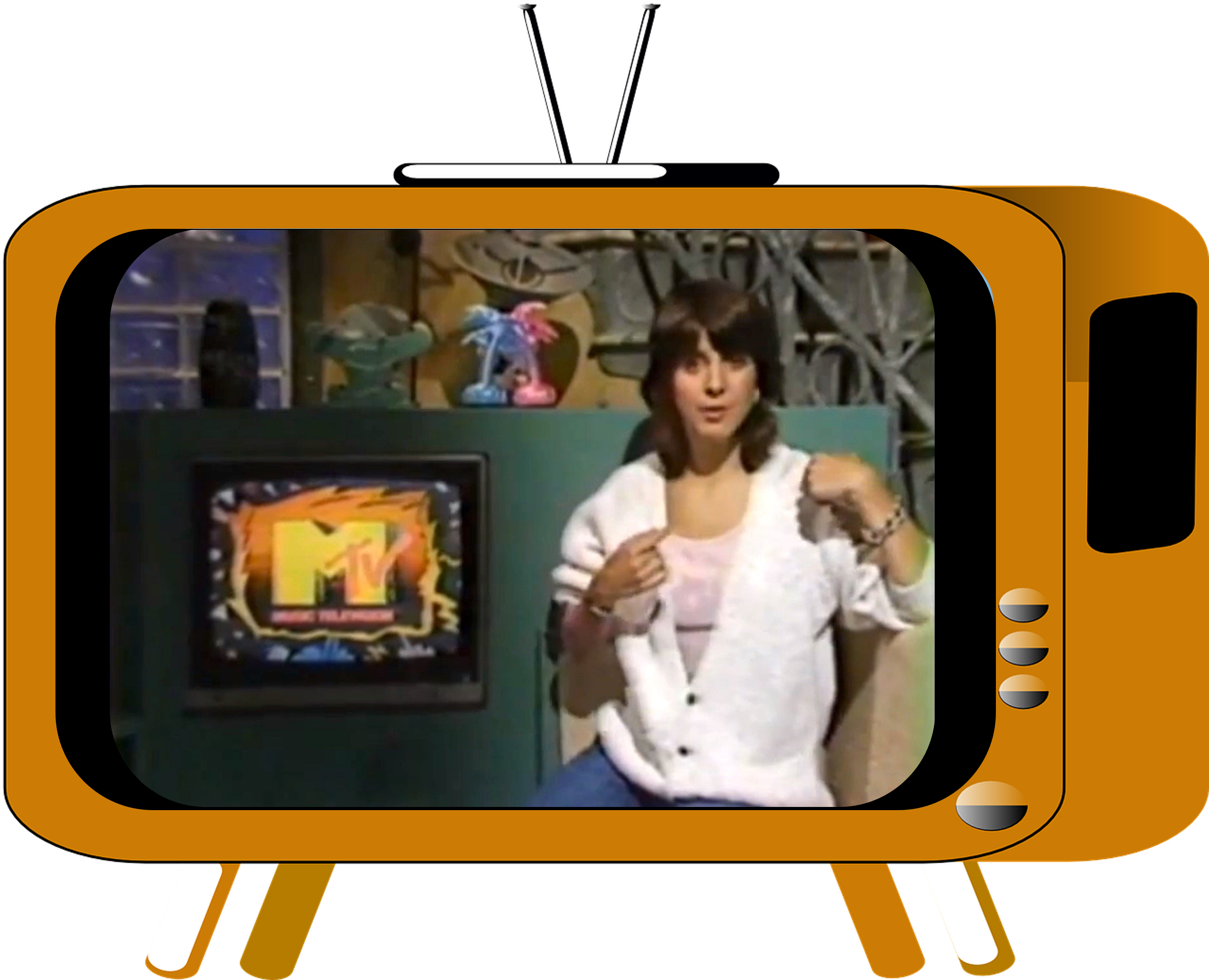 out in the boonies. And so when I finally got MTV, I mean, that’s what I did. I just watched music video after music video. And so that was really my start. And, and I just started reading magazines and books and anything I could get my hands on, and I found that the stories behind the songs, they were stranger than fiction. You know, you couldn’t make some of this stuff up. Some of these stories I tell, they’re unbelievable, even to me. And I love to collect stories. That’s, that’s probably the biggest thing about music, is the lore, the stories behind these bands and their songs and what inspired them to create the music.
out in the boonies. And so when I finally got MTV, I mean, that’s what I did. I just watched music video after music video. And so that was really my start. And, and I just started reading magazines and books and anything I could get my hands on, and I found that the stories behind the songs, they were stranger than fiction. You know, you couldn’t make some of this stuff up. Some of these stories I tell, they’re unbelievable, even to me. And I love to collect stories. That’s, that’s probably the biggest thing about music, is the lore, the stories behind these bands and their songs and what inspired them to create the music.
Fred: Well, and that’s one of the reasons you’re a very compelling host – you understand the power of storytelling. And one of the things that we radio guys talk about quite a lot is “Where is the storytelling element on the radio?” Why isn’t it a more prominent piece of what radio stations do?
Adam: It’s always been about the storytelling. It’s what makes you curious about the song. And that happens to me in interviews where they’ll tell me the story of where the song came from, and all of a sudden I go and listen to it with a different set of ears, and it becomes much more poignant and much more expressive. And then all of a sudden. I’m a fan of the song and it enters into my realm, and I know that many people feel that way.
I mean, the great storytellers, Bruce Springsteen, Bob Dylan, Tom Petty, Billy Joel, these are my heroes. Even people we don’t talk about as much like Harry Chapin, a great storyteller. And these songs just become like an old friend. They become a part of us, the soundtrack of our lives, and then they start to attach themselves to our memories.
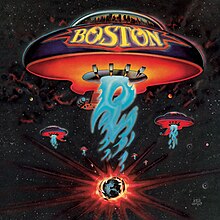 So, there was the first time (I introduced) my son to Boston. He was sitting in the backseat of the car, and he was really into Imagine Dragons and some of the music his older brother was playing for him. And I said, “You want to hear a real rock and roll band? Let me play you this.” And I played “More Than A Feeling” and I just saw his eyes light up. I had to pull over and just watch his reaction. He could not believe what he was hearing. And so I told that story, and it was so sweet because (Boston’s) Tom Scholz heard this story and sent a couple of guitar picks and sent a nice note to my son. And I thought that was really cool, but that’s an example of the power of music. And so now when I hear “More Than A Feeling,” even though I’d heard it a thousand times, now it’s got a new memory.
So, there was the first time (I introduced) my son to Boston. He was sitting in the backseat of the car, and he was really into Imagine Dragons and some of the music his older brother was playing for him. And I said, “You want to hear a real rock and roll band? Let me play you this.” And I played “More Than A Feeling” and I just saw his eyes light up. I had to pull over and just watch his reaction. He could not believe what he was hearing. And so I told that story, and it was so sweet because (Boston’s) Tom Scholz heard this story and sent a couple of guitar picks and sent a nice note to my son. And I thought that was really cool, but that’s an example of the power of music. And so now when I hear “More Than A Feeling,” even though I’d heard it a thousand times, now it’s got a new memory.
Fred: What was that moment where the light bulb went off and you said, “This is what I’m going to do for a career. This is how I want to actually spend my life, doing this.” How did that happen?
Adam: Oh, my gosh, Fred. It was a happy accident. It wasn’t planned at all. I mean, I always wanted to be a DJ. I would practice in my room. I remember they had this toy back in the mid-eighties, and it was like a DJ toy, and you could record yourself. And I think they were trying to push it because of the hip-hop craze but I wanted to get my hands on it because I wanted to create my own show, like Casey. So I did that in my room and I would even do his voice and everything.
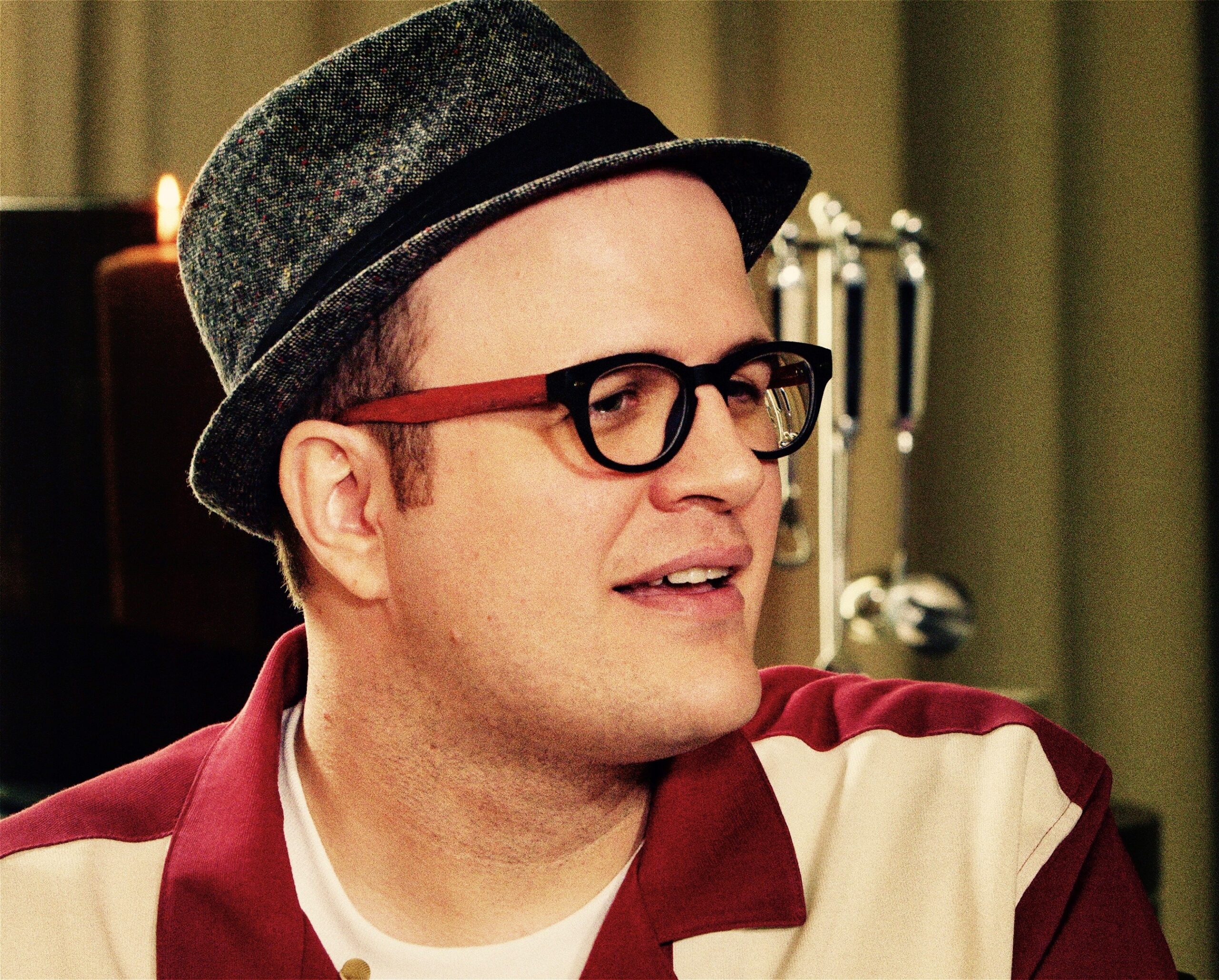 But what happened is, as an entrepreneur, I pursued a lot of different businesses in my life, and, and I was even in a band for a while. I was a lead singer of a band because I had some time. I had sold a company, and I had a few years to do what I wanted to do. And I told my wife I was going to go for it. My wife has been so supportive through all this. And so I had this little garage band in my basement, and we ended up winning the Hollywood music award on Grammy weekend in LA for the best unsigned band contest they had. This is back in, like, 2010. And so that was a lot of fun.
But what happened is, as an entrepreneur, I pursued a lot of different businesses in my life, and, and I was even in a band for a while. I was a lead singer of a band because I had some time. I had sold a company, and I had a few years to do what I wanted to do. And I told my wife I was going to go for it. My wife has been so supportive through all this. And so I had this little garage band in my basement, and we ended up winning the Hollywood music award on Grammy weekend in LA for the best unsigned band contest they had. This is back in, like, 2010. And so that was a lot of fun.
By winning this contest, you got to have your song produced by a Grammy winning producer, and then you got to play House of Blues and the Troubadour. So we did that, and then I realized that I would have to go out on the road. I was in my early thirties, looking at going out on the road and just living in a van. And the music industry had changed. And I had just had my son, my first son who was three years old, and my wife had another baby, and I didn’t want to be away from my kids. I didn’t want to go through that life.
So I started a music company that helped kids learn how to get into music. I had a friend, a business partner, who had a recording studio and he was an engineer, and so we put together this thing called “Music For The Masses” after the Depeche Mode album. And we had kids signing up, and were teaching them how to record songwriting and music and how to market themselves as kind of development company.
And I got called into this cattle call by this guy that had taken over the ABC-TV affiliate in Salt Lake City. He had come from San Diego, and he had done a popular music show there called Fox Rocks on the Fox Channel. He wanted to do a similar thing in Salt Lake, and wanted to get indie bands on. And it would just be an hour long show, and it would show off local talent. And so he brought me in, along with ten other people to be a potential sponsor.
But I told him they’ve tried this concept a few times, and nobody really cares about local music until they turn into Imagine Dragons or Neon Trees (two SLC bands). And I said, “why don’t you try to get big name bands that are coming through Utah? Because they’re probably not doing many interviews going through here. And then you use them as the forefront, and then you can use the local town as a backdrop.”
And he loved the idea and asked me to help him produce the show. I’d never done anything like that. So we went out and tried to interview people to be the host, and we interviewed different local DJs, and everybody had a niche taste, but I liked everything from the Clash to Toto. I just never had a filter of what was cool and what was not.
So he said to me, “Why don’t you host the show? You have this cool look, the fedora and the glasses. You know more about music than anybody I’ve ever met. Let’s have a test interview and see how you do.”
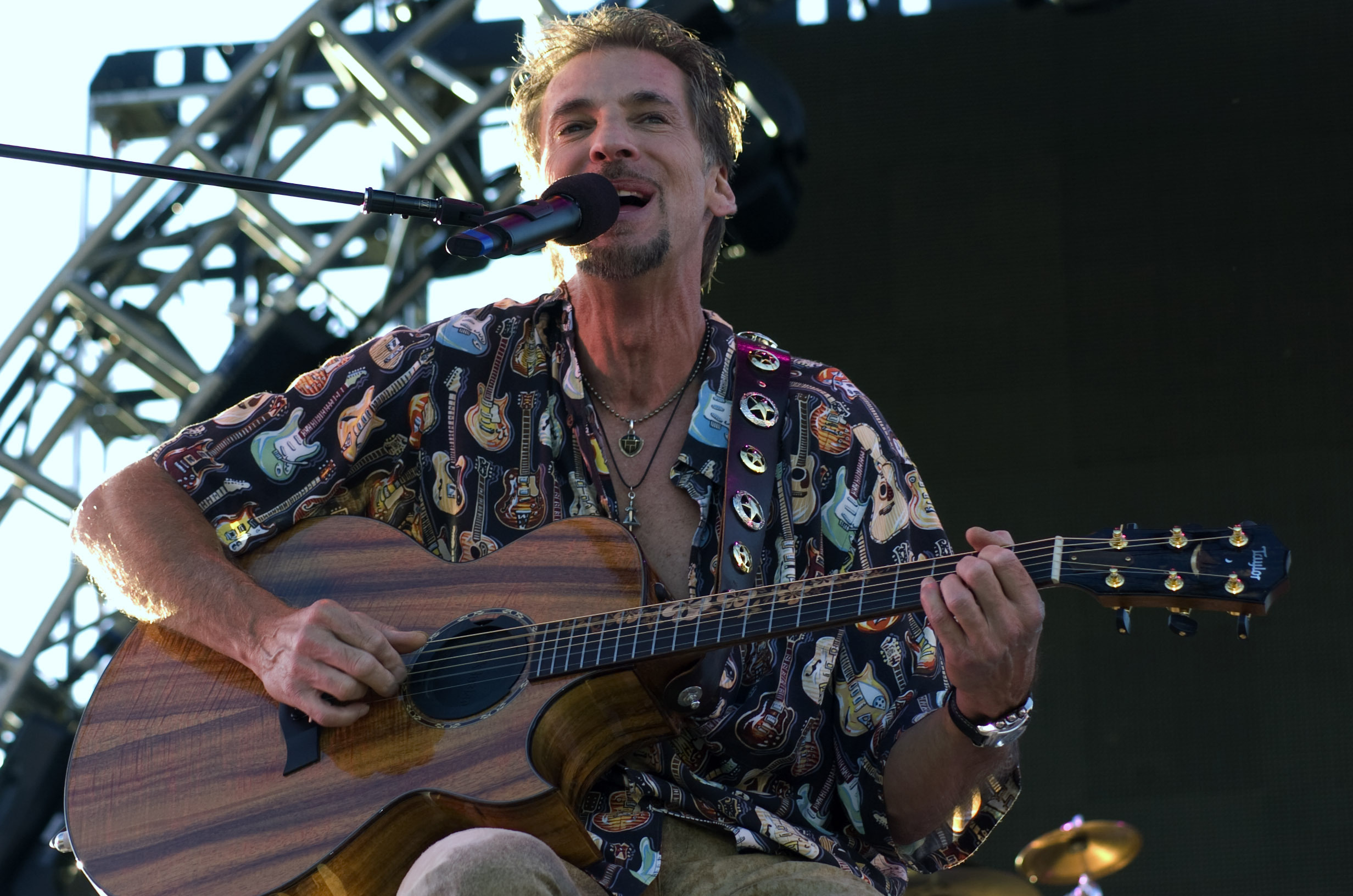
Kenny Loggins
So my first interview was with Kenny Loggins (pictured). And thank goodness it was Kenny, because he was so gracious. About ten minutes into the interview, he said, “Who are you? How have I never heard of you? This is the best interview I’ve ever done.” And I thought he told everybody that, so I didn’t really take it seriously. The interview is supposed to be like 15 minutes, and it went like an hour and a half. Finally when the interview is over, he pulled me aside and said, “Look, you have a gift, you have a passion for music as a way to connect the stories and the elements all together like nobody I’ve ever seen. You need to be doing this full time. Let me open some doors for you. By the next week, I had the Doobie Brothers, and the following week, the Beach Boys who gave me my nickname, Professor of Rock.
Fred: There’s a bunch of stations that are already lined up out of the Hubbard camp to carry (your new show) – you’re going to be on in Chicago, St. Louis and Phoenix. What’s “Classic Rock U” going to be like?

Logo: Jeremy Sinon
Adam: It’s a four hour show and it almost zigzags the exact opposite of what I do on YouTube. On YouTube, it’s 90% storytelling and 10% music, because obviously I can’t pull play a lot of the music. It’s fair use, so you gotta stick with exactly the part you’ve just talked about. And I want to play the whole song. And I get that. The biggest comment we get all the time on (YouTube) is I wish I could listen to the song after I hear your story.
And what’s great now with the radio show is we can flip that. It’s 90% music, 10% storytelling. So what’s fun about it is in that it’s a four hour show, and we’re doing kind of the twist on classic rock. You there with me, the professor, and class is in session. Today’s subject is, “1+1=2” playing bands with two lead singers.
Every couple hours, you’re going to get two or three icons that are going to tell their quick story before we play the song, you know, so you might have Lou Graham telling a story about “Jukebox Hero,” and then we go to Joe Elliott and he’s going to tell the story about Hysteria and how that album almost killed Def Leppard.
Fred: What part of being on the radio excites you? When you think about actually being on the radio after all these years, what part of it do you look forward to? Besides being able to play the entire versions of the songs, which is a plus, by the way.
Adam: I always ask this question to people that I interview: Do you remember the first time you heard your song on the radio? And I’ll tell you what, these guys light up like you can’t even imagine. Even the younger bands are like, “Man, the first time I heard my song on the radio…” It’s not the first time I saw my song come up on Spotify. Radio is such a part of our story. There’s something to be said about turning on the radio and letting it rip where you don’t know what’s coming next. It’s not even your playlist. It’s somebody else’s playlist. And you don’t know what the DJ is going to say. And that’s such a rich part of our heritage as humans that I don’t think that’s ever going to go away.
So when I ask that question to artists, they light up. They’re like, “Oh, man, I remember I pulled the car over and it was like everything that I’ve ever done in my life led up to this point.”
So for me, the first time that I heard the radio show…. We’ve already got eight in the can and, we’ll have probably 15 done. And I’ve heard it (on tape), and it’s fun to hear it, but the first time I hear that coming out of the radio, that’s going to be something really special, because it will connect me back to growing up listening to the radio with my dad, growing up listening to Casey Kasem. And so for me, radio even trumps YouTube, to be honest with you. It’s something that’s been a lifelong dream for me because that is where it all started for me. That’s where I gained such a love for music. My dad had one of those push button radios in his cab, and I was so fascinated by him going from station to station.
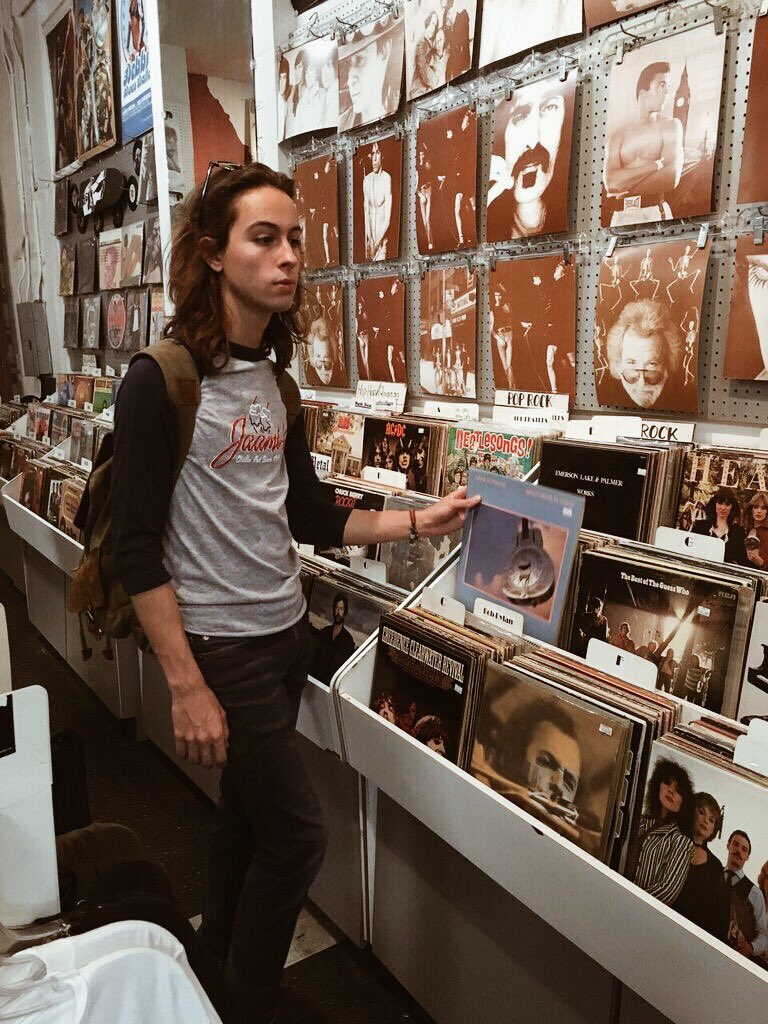 Radio is just such a part of our our human experience. I just don’t think it’ll ever go away. And we’re losing some of those things. You know, when I took my son the day his favorite band came out with a brand new album, I said, I told him, “I don’t want you to listen to it on Spotify. I want to take you, jump in the car with me, and I’m going to take you down to the record store, and I’m going to show you the experience I had when a new album would come out. And we went down to the store and we waited for them to open. I remember waiting for them to open the gate, running in the store, and having that (record) in his hands, that vinyl, and taking it home.
Radio is just such a part of our our human experience. I just don’t think it’ll ever go away. And we’re losing some of those things. You know, when I took my son the day his favorite band came out with a brand new album, I said, I told him, “I don’t want you to listen to it on Spotify. I want to take you, jump in the car with me, and I’m going to take you down to the record store, and I’m going to show you the experience I had when a new album would come out. And we went down to the store and we waited for them to open. I remember waiting for them to open the gate, running in the store, and having that (record) in his hands, that vinyl, and taking it home.
And ever since, every time a new album comes out from one of his favorite artists, he goes and buys the physical product because he wants that experience, that exploration, going out and seeking it and finding it and having the treasure at the end of the map, you know? And I think radio is like that as well. It’s like that first time you heard that song on the radio. Like, “I’ve got to have that song.” And I think the ease of getting it (on Spotify) has taken away the adventure a bit. We need to bring that adventure back to our experience, our human experience.
Fred: Talk to me about YouTube because that obviously was a breakout moment for you. Why and how did you use it and how long did it take you to figure out what you were doing there? Because you’ve got that platform pretty well down, right?
Adam: I don’t think anybody would ever say they have YouTube down. That algorithm is…every day it’s a new thing. But, it was a real blessing how it did happen. When the pandemic hit, see, I’d been doing the show for 10 years, and we had deals that were close with different companies. We were talking to Sony and Walmart. We were going to be in every single Walmart on Walmart Radio and were going to do all this really cool stuff and that we’ re their first ever client show that was signed for their streaming network.
And they decided to go a different direction and the deal fell through. So there was all these opportunities that we had that just never worked out. So I was pretty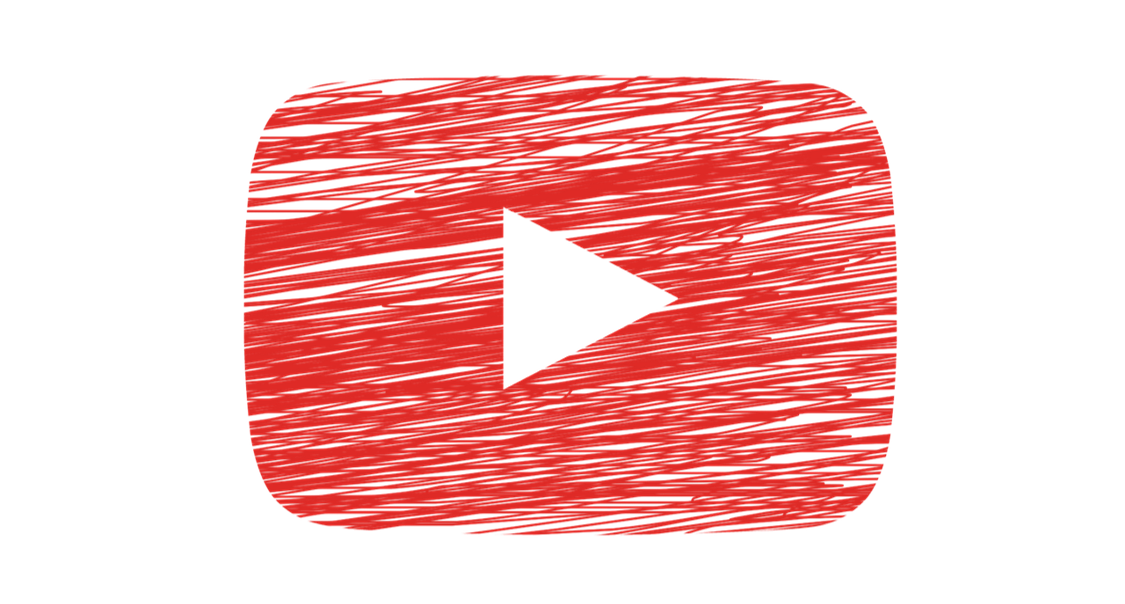 frustrated because we had all this material that we were going to make, and it just wasn’t working out. So when the pandemic hit, we really had to go onto YouTube. That was really our only option and, you know, because we had some investors and some people that put money into this. And so basically, we went on to YouTube and said, we’re going to do the best we can.
frustrated because we had all this material that we were going to make, and it just wasn’t working out. So when the pandemic hit, we really had to go onto YouTube. That was really our only option and, you know, because we had some investors and some people that put money into this. And so basically, we went on to YouTube and said, we’re going to do the best we can.
I think our first month we made $300. So we were like, this isn’t going to be a viable thing. But then the second month it just started growing, and the word of mouth happened, it was all word of mouth. We haven’t spent a dime on YouTube on marketing or anything. It’s just word of mouth. And it grew from people sharing it. And all of a sudden we started seeing 30,000 subscribers in a month and then 40,000. And it just grew and grew and grew from there.
And at first it was an ’80s show, and then it started to expand to ’70s rock and then the’ 60s and the ’90s. And now we pretty much can go from the Beatles to Nirvana and tell any story. It started to become about the story and the song and the artist. And that’s kind of the one, two, three for us. It’s always about the story, the great story. And if you can connect a great song that people love….
And then the artists. Usually, most people don’t know artists. They know songs, though. And so when we started, so we focused on the songs and we knew they wanted a great story. And so we connected those two. And then when you can connect all three, you’ve got a home run. I think that people will continue to share these stories and pass them down from generation to generation.
Fred: Some podcasters who have reached a certain level of success are now creating events and doing live shows in front of theater audiences. Have you done that? Is that part of the equation for the Professor of Rock brand?
Adam: We have done live shows. We’ve done about 15 shows. It’s called “Professor of Rock Live” with a studio audience or with a ticketed audience. And we’ve done them at a 1,300 seat theater. We actually did it where they have the Sundance Film Festival at a theater there. And we did a series with Billy Idol, Sammy Hagar, REO Speedwagon, and Huey Lewis. When it’s me on stage with them, it’s like “Inside the Actors Studio” meets “MTV Unplugged.” And I have a huge screen behind us, and we tell the stories, their life in ten stories or ten songs. They’ll tell the story of the song, and then they’ll play the song with their band or they’ll play it acoustic and it’s incredible.
Fred: I look at the Skyview and Hubbard collaboration and I go, you know what? This is cool. I was aware of you as I’m sure a handful of other radio people were. It will be great for the rest of the radio world to now discover you as well. So let me put you on the spot – I have long believed that classic rockers all share the passion for the music, but everybody has a very different idea about who their real heroes are. I have likened it to Mount Rushmore, where we have our four all time favorites up there, carved in stone. So who’s on your Mount Rushmore, Adam?
Adam: Well, so I separate it into bands and artists because to me, they’re separate. But my bands, that’s hard. Well, actually my favorite band of all time is the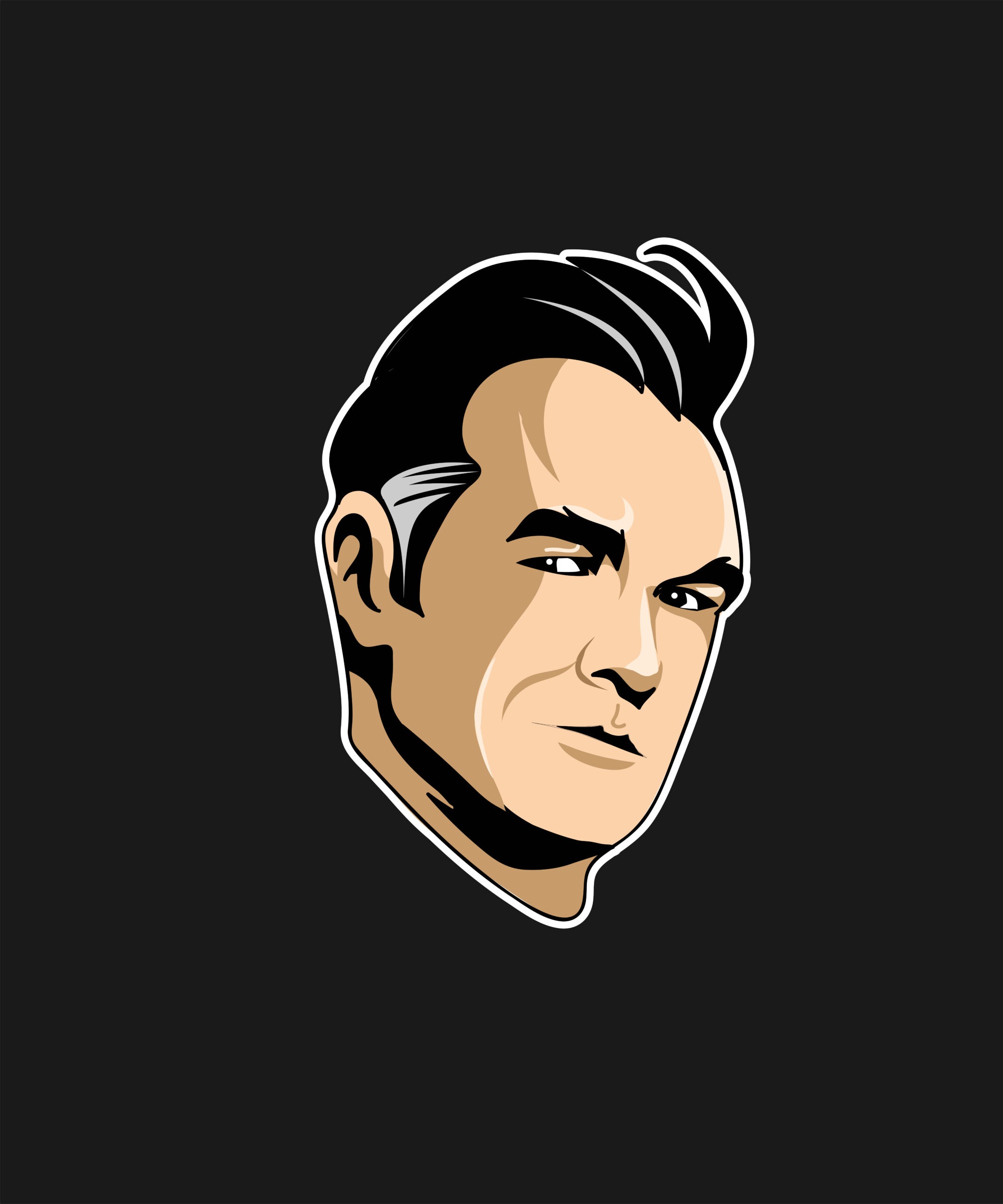 Smiths. I love the Smiths. Johnny Marr is an incredible guitar player and I think Morrissey’s the greatest lyricist ever. I mean, those vocals – they just stop you cold. Van Halen would have to be on there, because they’re just such a touchstone for me. Pink Floyd, I think, would be on there. And, I mean, on a different day, I’d throw in R.E.M. And I love the Replacements. I love a lot of different bands. I love Journey and the Beach Boys, but I got to go with the Beatles. But I’m leaving out Zeppelin, but I think today I’ll go with the Smiths, Van Halen, Pink Floyd, and the Beatles.
Smiths. I love the Smiths. Johnny Marr is an incredible guitar player and I think Morrissey’s the greatest lyricist ever. I mean, those vocals – they just stop you cold. Van Halen would have to be on there, because they’re just such a touchstone for me. Pink Floyd, I think, would be on there. And, I mean, on a different day, I’d throw in R.E.M. And I love the Replacements. I love a lot of different bands. I love Journey and the Beach Boys, but I got to go with the Beatles. But I’m leaving out Zeppelin, but I think today I’ll go with the Smiths, Van Halen, Pink Floyd, and the Beatles.
So we’re talking now solo heads now, right? Bruce Springsteen, Billy Joel, Frank Sinatra, and Elvis.
Fred: We could talk all day, Adam. I wish you all the best, not just on the endeavors that you’ve been doing, but the radio thing, I think it’s going to be really great. I’m rooting for you.
Adam: Thanks, I appreciate it.
To get a listen to a demo of “Classic Rock U,” check it out here.
Originally published by Jacobs Media

